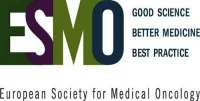Scientists have identified higher levels of a receptor protein found on the surface of human breast tumour cells that may serve as a new drug target for the treatment of breast cancer. The results, which are published in EMBO Molecular Medicine, show that elevated levels of the protein Ret, which is short for “Rearranged during transfection”, are associated with a lower likelihood of survival for breast cancer patients in the years following surgery to remove tumours and cancerous tissue.
“Our findings suggest that Ret kinase might be an attractive and novel alternative therapeutic target in selected groups of breast cancer patients,” remarked Nancy Hynes, Professor at the Friedrich Miescher Institute for Biomedical Research and the University of Basel, Switzerland. “Initial experiments in mice that serve as model organisms for the study of breast cancer have revealed that specific inhibitors significantly block the spread of cancer and decrease the number of metastatic tumours found in the lungs.”
The scientists examined tumour tissue microarrays of more than 100 breast cancer patients who had undergone surgery to remove their tumours. Antibodies were used to detect the levels of Ret in the samples. In other experiments, four different cancer cell lines were used and injected into mice to study the effects of Ret inhibitors on the progress and spread of the cancer.
“Our findings demonstrate that blocking Ret kinase not only decreases the growth of tumours but also impacts the potential of the cancer to spread throughout the body,” Hynes said.
Targeting receptor tyrosine kinase enzymes with antibodies or small molecular inhibitors is a clinically validated approach for cancer therapy. However, only a subset of patients are eligible for these types of treatments which makes it essential to discover additional inhibitors that could be useful in breast cancer therapy.
Ret inhibition decreases growth and metastatic potential of estrogen receptor positive breast cancer cells
Albana Gattelli, Ivan Nalvarte, Anne Boulay, Tim C. Roloff, Martin Schreiber, Neil Carragher, Kenneth K. Macleod, Michaela Schlederer, Susanne Lienhard, Lukas Kenner, Maria I. Torres-Arzayus and Nancy E. Hynes
The paper can be read at http://onlinelibrary.wiley.com/doi/10.1002/emmm.201302625/abstract
Latest Articles
Pharma, Oncology, breast cancer
Scientists have identified higher levels of a receptor protein found on the surface of human breast tumour cells that may serve as a new drug target for th...


![Tuberculosis Diagnostics: The Promise of [18F]FDT PET Imaging Tuberculosis Diagnostics: The Promise of [18F]FDT PET Imaging](https://res.cloudinary.com/healthmanagement-org/image/upload/c_thumb,f_auto,fl_lossy,h_184,q_90,w_500/v1721132076/cw/00127782_cw_image_wi_88cc5f34b1423cec414436d2748b40ce.webp)







